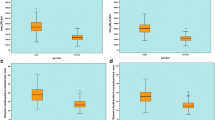Abstract
An analysis of force distribution in the hand during maximum isometric grasping actions is reported in a detailed and accurate manner. A microcomputer-controlled instrument which measures all 12 phalangeal forces of fingers simultaneously, in a single attempt at squeezing a cylindrical object, is described. The study involved 20 normal subjects of different weights and age groups grasping tubes of 50 mm, 75 mm, 90 mm and 110 mm diameters. Normal grasp forces decreased significantly with the increase in tube diameter, with the force being concentrated more on the distal segments of the fingers than on the proximal and middle segments. The mean percentage contributions of finger forces to total grip strength, from index to little fingers, were 31, 33, 22 and 24 per cent, respectively. The study was extended to cover leprotic and paralytic hands to assess their functional capabilities. In the case of leprosy subjects, the grip strength decreased with the severity of the disease and was only about 50 per cent of that of normal subjects. In hemiplegics, the grip strength was only about one-eighth of the normal values. The above assessment procedure provides baseline data which could sere as guidelines to a clinician in assessing the severity of the disease and observing the patient's recovery following the treatment. It would also be useful in the design of hand-operated controls and prosthetic arms.
Similar content being viewed by others
References
Amis, A. A. (1980) Elbow joint force predictions for some strenuous isometric actions.J. Biomech.,13, 765–775.
Amis, A. A. (1987) Variation of finger forces in maximal isometric grasp tests on a range of cylinder diameters.J. Biomed. Eng.,9, 313–320.
An, K. N., Cooney, W. P., Chao, E. Y. andLinsched, R. L. (1978) Functional strength assessment of normal fingers. InAdvances in bio-engineering. ASME, New York, 89–90.
An, K. N., Chao, E. Y. andAskew, L. J. (1980) Hand strength measurement instruments,Arch. Phys. Med. Rehab.,61, 366–368.
An, K. N., Askew, L. J. andChao, E. Y. (1986) Biomechanics and functional assessment of upper extremities. Proc. Ann. Int. Industrial Ergonomics & Safety Conf., Louisville, Kentucky, USA, 12–14.
Ayub, M. M., Lo Presti, P. andBerme, N. (1980) Resultant finger joint loads in selected activities.J. Biomed. Eng.,2, 285–289.
Berme, N., Paul, J. P. andPurves, W. K. (1977) A biomechanical analysis of the metacarpophalangeal joint.J. Biomech.,10, 409–412.
Chao, E. Y., Operande, J. D. andAxmear, F. E. (1976) Three dimensional force analysis of finger joints in selected isometric hand functions. —Ibid.,9, 387–396.
Hazelton, F. T., Smidt, G. L., Flatt, A. E. andStephens, R. I. (1975) The influence of wrist position on the force produced by finger flexors. —Ibid.,8, 301–306.
Long, C. (1970) Intrinsic-extrinsic muscle control of the hand in power grip and precision handling.J. Bone & Joint Surg.,52A, 853–867.
Premkumar, R., Paul Raj, K., Bentlay, J. andBrandsma, J. W. (1985) Measurement of hand forces and its clinical use in tendon transfer. Proc. Int. Conf. on Biomechanics & Clinical Kinesiology of Hand and Foot, India.
Walker, P. S. andErkman, M. J. (1977) Clinical evaluation of finger joints. InHuman joints and their artificial replacements.Walker, P. S. (Ed.) C. Thomas, Springfield, Illinois, 348–351.
Weightman, B. O. andAmis, A. A. (1982) Finger joint force predictions related to design of joint replacements.J. Biomed. Eng.,4, 197–225.
Author information
Authors and Affiliations
Rights and permissions
About this article
Cite this article
Radhakrishnan, S., Nagaravindra, M. Analysis of hand forces in health and disease during maximum isometric grasping of cylinders. Med. Biol. Eng. Comput. 31, 372–376 (1993). https://doi.org/10.1007/BF02446690
Received:
Accepted:
Issue Date:
DOI: https://doi.org/10.1007/BF02446690




